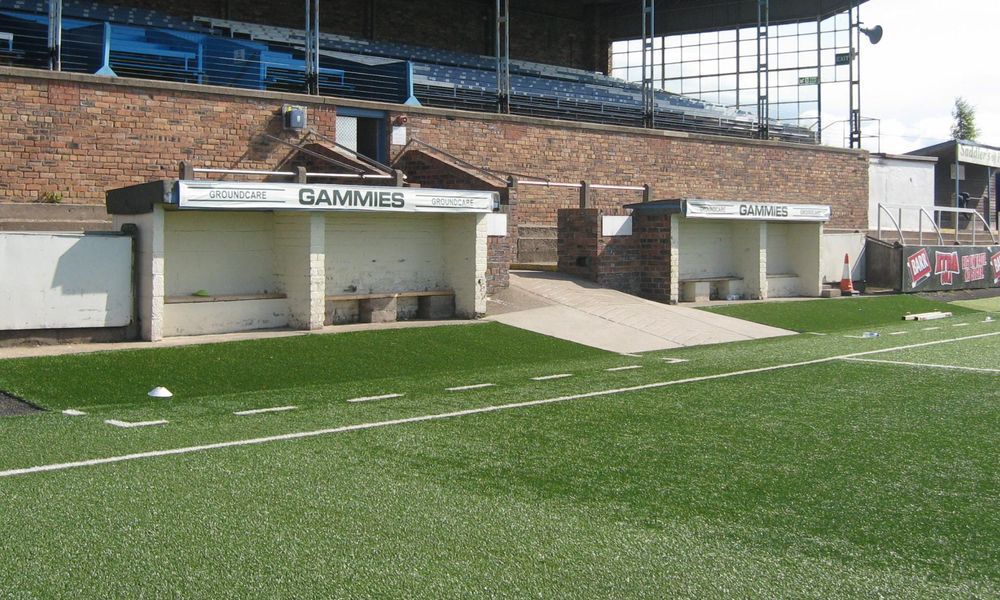
Goalkeeper Vic Rouse started his career as an amateur with Millwall.
He left the Lions without making a senior appearance and switched to south London to join Crystal Palace in 1956.
Rouse went on to make 238 League appearances for Palace, with his debut in 1956 seeing him keep his first clean sheet in a 0-0 draw against Swindon Town to start an impressive career at Selhurst Park.
It was just three years before he got a call-up for Wales to play against Northern Ireland in Belfast, and in doing so, he became the first player to represent his country whilst being with a Fourth Division club in 1959.
Rouse made 49 appearances in Palace`s promotion season of 1960/61 and would provide assists with his far-reaching and powerful throws that went past the halfway line.
In 1963, he left Palace to sign for Northampton Town but left without making an appearance for the then-Second Division Cobblers and signed for the then-still recent Fourth Division outfit, Oxford United.
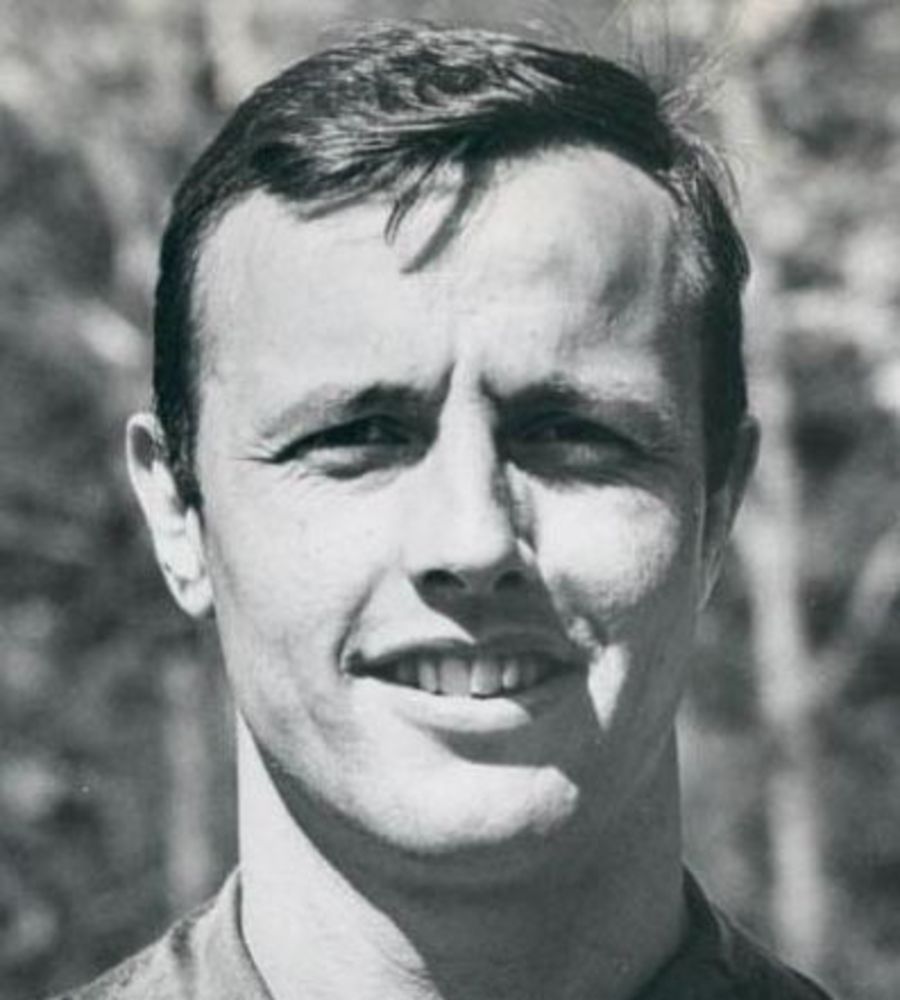
Vic Rouse
He played 22 times for United and then 40 for Leyton Orient before heading over to the United States where he enjoyed a successful five years firstly as a player, then as head coach of Atlanta Chiefs in the North American Soccer League.
When Rouse first went stateside, his boss at Atlanta was fellow Welshman Phil Woosnam, who went on to become the league`s supremo for many years.
In late 1971, he returned to England and was appointed as manager of Southern League Metropolitan Police.
He was in charge for the majority of the Met`s first spell in the Southern League and then for several seasons after they were switched to to the Isthmian League.
Bob Hewison was a wing-half, regarded as being a 'model professional'.
Despite suffering badly through a number of injuries he would just 'get on with it', never complaining.
A Geordie lad, Hewison began his playing career with amateur teams in the area such as East Holywell Villa and Whitley Athletic, joining Newcastle United in 1910.
In those years immediately preceding the First World War, Hewison proved to be a solid performer at Newcastle, never spectacular, but always ready and willing to do the job and do it well.
During the war years, he was at Leeds City, then-managed by the legendary Herbert Chapman, and became entangled in the scandal over illegal payments which was to eventually see the demise of the club which to lead to the formation of Leeds United.
At the end of hostilities, however, he returned to Newcastle but only appeared in another 3 games before moving to Northampton Town in the summer of 1920 as player-manager.
He spent five seasons with the Cobblers where he was involved in two rather unfortunate 'records' for the club.
The first saw them go on a run of 33 away games in the league without a win when, between their 1920 Christmas Day fixture at Gillingham, which Northampton won 5-2, and their 3-0 win on September 6th 1922, curiously again at Gillingham, they had a run of 33 away matches and never notched up a victory.
The second unwanted record being that during the 1924/25 season they missed no fewer than nine penalties!
Not all was bad though, as he was also part of a much better record when on Boxing Day of 1922 a then-record attendance of 18,123 saw gate receipts exceed £1,000 for the very first time.
In August 1925, Hewison went on to manage Queens Park Rangers.
Another five seasons there and he moved to Bristol City where he remained for 17 seasons from 1932 until 1949. However, there was another 'scandal' at Ashton Gate over illegal payments which meant that, between October 1938 and May 1939, Hewison was 'suspended' by City with team captain Clarrie Bourton becoming player-manager for that period.
Once all was resolved, Hewison earned a respectable reputation as a manager and was awarded a `long service` medal by the Football League in 1943.
After leaving City, Hewison took charge of Guildford City in the Southern League.
But he returned `west` and enjoyed a lengthy spell in charge of Guildford`s league rivals Bath City until 1961.
Defender Jon Newsome started his career with his home-town club Sheffield Wednesday.
As a YTS scholar, he was present at the Hillsborough disaster carrying out ball boy duties.
He joined Leeds United in 1991 where he played 10 games and scored twice as they won the First Division under Howard Wilkinson in 1992, meaning Newsome was eligible for a medal.
However, Newsome became Norwich City's first £1million signing when he transferred from Leeds in July 1994.
When he transferred to Sheffield Wednesday in February 1996 after making 62 appearances for the Canaries, his career came to a full circle having commenced when he made his League debut and 6 consequent appearances for Sheffield Wednesday.
In November 1998, Newsome joined Bolton Wanderers on a month's loan.
Along with nine other first-teamers, Newsome was placed on the transfer list at the end of May 1999 with Wednesday seeking £1.5million for his services as they attempt to rebuild their side.
He didn't move on during 1999 or the early part of 2000 but his future remained unsettled when his contract expired in the summer of 2000 but in May 2000, he announced his retirement from the game, at the early age of 29, due to his knee injury.
Newsome then worked for Wednesday's academy as a coach, and then spent time at Grimsby Town as a coach with their centre of excellence and as a scout.
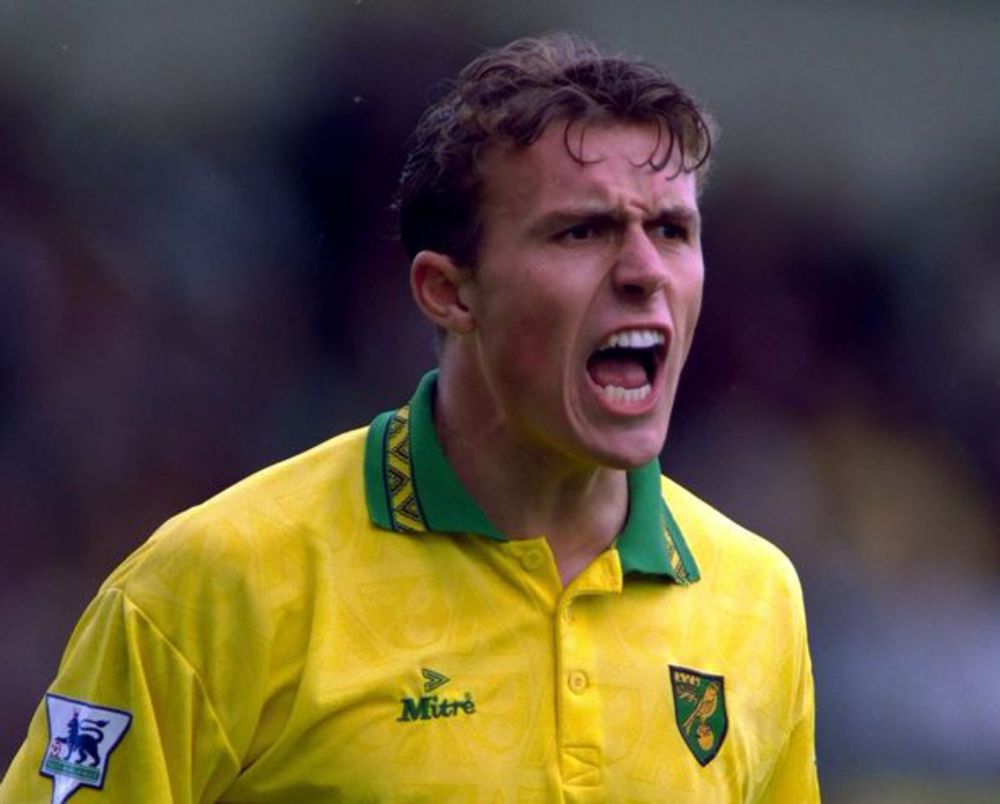
Jon Newsome
In April 2002, Southern League side Gresley Rovers announced Newsome's appointment as manager to replace John McGinley.
Gresley finished sixth that first season under Newsome's stewardship and he spent the 2002 summer boosting his squad for the new campaign signing a new assistant manager in Alan Tittleton and adding Craig Hopkins, Gary Smith, Jamie Barratt, Michael Crawford, Gary White and Gary Moran to his ranks and also registered himself as a player in case of emergencies.
In August 2004, Newsome was found helping out at Spalding United before becoming the owner of a Sheffield-based car sales company, AutoMarques.
In late 2018 he closed his motor trade business and started work as a football agent for his own company Innov8 Sports Management Ltd.
Gary Julians was a very good non-League striker in his day.
Son of former Nottingham Forest and Millwall forward Len Julians, Gary began his career at The Den without managing to break into the senior side.
He joined Southern League Dartford for the first time and played alongside another future Darts boss, Tony Burman, in attack.
He played for Dartford in the Alliance Premier League and also for Maidstone United, Welling United and Gravesend & Northfleet.
He was back in the Southern League with Crawley Town, Chelmsford City and Dover and had a second spell with Crawley and then Gravesend before finishing his playing career.
He returned to Dartford as reserve team manager, with former team-mate Tony Burman now in charge.
In 1996, the ever-popular Burman had to relinquish his managerial responsibilities through work commitments and Julians took over, having led the `stiffs` to an excellent season in the Kent League Division Two, finishing runners-up to Tonbridge after an exciting title chase.
In September 1997 a disastrous fire at Erith & Belvedere, put the club`s future in serious doubt, as it became doubtful whether or not the ground would be able to host Southern League football the following season.
With this doubt in mind a new ground sharing arrangement was sought, and an agreement was made for the club to share the Essex-based facilities of Purfleet.
From an administration point of view matters could not be much more complicated, as Dartford`s three teams now played on three different grounds - Purfleet, Cray Wanderers and Phoenix Sports.
In October 1998 came the news that Dartford supporters had been waiting for when the Borough council at last came good on their promises to find the club a piece of land within the Borough, for which to build a new home of their own.
However, Julians resigned in November 2001 to end an eight-year association with the club.
He went on to work in motor finance for 20 years.
As he grew up in wartime South Wales, Reg Davies was such a talented soprano that his parents envisaged a professional future for him on the world's most gilded stages. And indeed he toured the length and breadth of the country with a hugely popular choir.
But all the while the slender, almost frail-looking teenager was marching to the beat of a different drum, his dream was to play football at the highest level, and he made it come true, most notably in the black and white stripes of Newcastle United and, although not as often as he would have liked, in the red of Wales.
Davies was an inventive inside-forward - an attacking midfielder in modern parlance – and both a schemer and a scorer.
He possessed not a vestige of brawn but was endowed with an exceptionally astute football brain and sudden, searing acceleration over short distances which rendered him a menace both in central positions and anywhere in the vicinity of opponents' penalty boxes.
All the enjoyment that such skills engendered would have been denied to the fans of his four Football League clubs and his country had he elected to build on his early musical success.
So sought-after was Davies's voice that he was invited to join the immensely successful Steffani's `Silver Songsters`, which also offered a place to Ronnie Ronalde, who went on to earn international fame as a singer, yodeller, and melodic whistler.
Davies' father believed that his son should make his way in show business, but football proved too strong an attraction and after shining with non-League Cwm Athletic near Swansea, he signed amateur forms for Southampton in the mid-1940s.
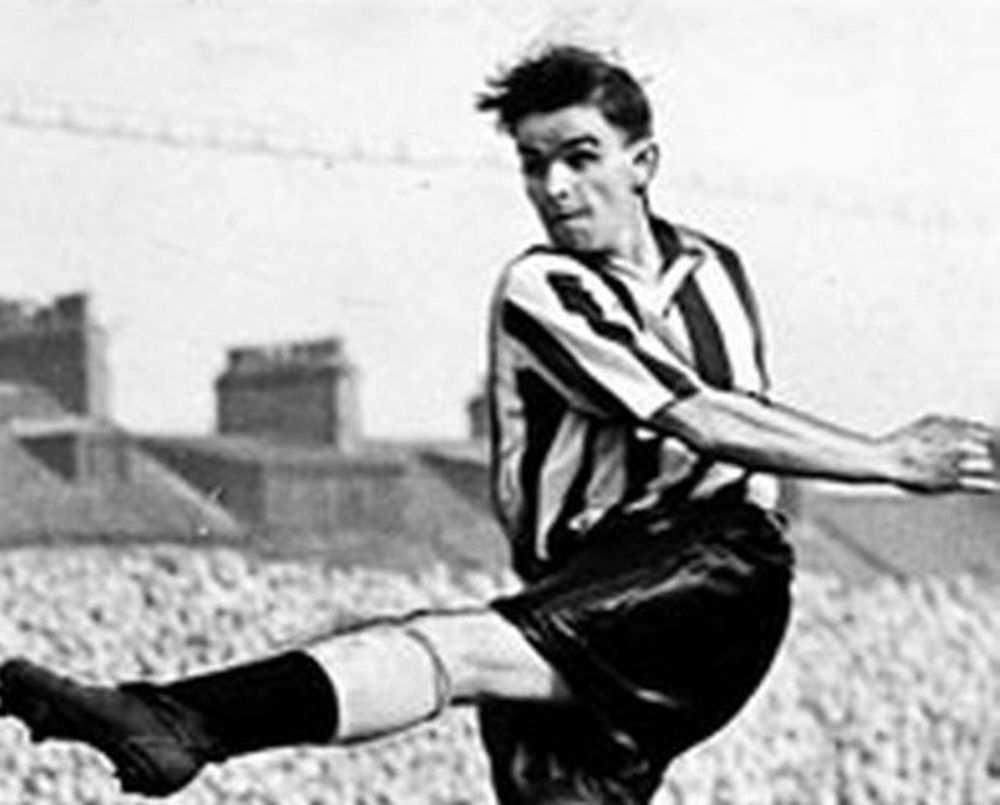
Reg Davies
His momentum was interrupted by National Service in the Army Medical Corps, but when he was demobbed in 1949, he turned professional with Southend United, then one of the better teams in the Third Division (South).
After two excellent seasons at Roots Hall, Davies was snapped up by top-flight Newcastle United, who bought him in April 1951, a month short of his 22nd birthday, for £9,000.
The fee included £1,000 to be paid only if he attained full international stature, but the Shrimpers had to wait only 18 months before banking the full fee.
Davies made a scoring debut for the Magpies in a 3-1 home victory over Wolverhampton Wanderers in October 1951, but it wasn't until 1952/53 – when he also made his entrance for Wales, in a 2-1 defeat by Scotland at Ninian Park, Cardiff – that he achieved a major impact on Tyneside.
By then he had experienced the frustration of being 12th man – there were no playing substitutes in those days – as Newcastle won the FA Cup at Wembley for the second year in succession, luckily beating Arsenal through a late goal by George Robledo.
Although he was delighted for his team-mates, he was a tad miffed on his own behalf, because just before the Chilean had headed into the net, the Newcastle manager Stan Seymour had promised him a start in the almost inevitable replay.
Davies was denied Wembley glory again in 1955. He was picked to face Manchester City but went down with tonsillitis, looking on in discomfort as goals from Jackie Milburn, Bobby Mitchell and George Hannah secured the famous old trophy.
Although he played more games than he missed during most of his eight-year sojourn at St James' Park, and collected 50 goals in his 170 appearances, the Welshman – who could operate either on the right or the left, or even on the wing – rarely commanded an automatic berth, being faced by distinctly warm competition from the likes of Hannah, Ivor Broadis and, later, the young and skillful George Eastham.
Still, he contributed worthily to the cause of the Magpies, who were usually to be found in mid-table, before departing to join Swansea Town of the Second Division in October 1958 as a makeweight in the deal which took Ivor Allchurch to the North-east.
By then Davies' international career was over, much to his chagrin: he believed he should have been part of the squad which reached the World Cup quarter-finals in Sweden in 1958.
His sixth and final outing was against England in Cardiff in October 1957, when he was pitted in direct opposition to Manchester United's youthful leviathan, Duncan Edwards.
Before the match, the Wales manager Jimmy Murphy gave his team talk, running the rule over the tasks facing each player except Davies.
As they headed for the pitch, the perplexed inside-forward apprehended Murphy, who worked with Edwards on a day-to-day basis as assistant manager at Old Trafford and fully understood the muscular Englishman's prodigious qualities.
Davies piped up: "Jimmy, what about me? What do I do if Duncan Edwards comes through with the ball?" Murphy's reply was succinct: "Reg, son, just get out of his way. I wouldn't want you to get hurt!"
After the game, which England won 4-0, Edwards and Davies swapped shirts, and the Welshman's prize became a valuable asset after Edwards perished in the Munich air disaster a few months later, although Davies refused to cash in on it, eventually donating it to the Manchester United Museum.
Back at club level, he spent three seasons at the Vetch Field, featuring in a narrow escape from relegation in 1962, before making a £4,000 switch to Third Division Carlisle United that summer.
His first term at Brunton Park ended in demotion, but he was prominent as the Cumbrians bounced back at the first attempt in 1963/64.
After that, aged 35, Davies left the Football League, spending a season as a player with Southern League Merthyr Tydfil and enjoying a spell as player-manager of the Martyrs league rivals King's Lynn from December 1965 until November 1970 – a 265-game spell in charge.
In 1971 he emigrated to Perth, working as player-coach with Bayswater United and Ascot, guiding them both to major trophies.
He appeared for Western Australia against New Zealand when he was 47 and continued to play at a high standard into his 50th year.
Thereafter he remained a very fit man, living near the Indian Ocean and relishing his regular jogging sessions on the beach.
He died in Perth, Australia in February 2009, aged 79.
Midfielder John Wickens actually began his playing career with Manchester United.
He moved south and signed for then-Southern League Premier Division side Bexley United.
He turned out for the Kent outfit in 1963/64 and 1964/65 but left when the club were relegated at the end of his second season.
He switched to Kent League outfit Herne Bay and was good enough to be picked to represent his county.
After playing a handful of games on `dual registration` with Southern League Margate during 1969/70, he made a more permanent switch to Hartsdown Park in the summer of 1970.
He went on to make 77 appearances for Gate, scoring 16 goals before moving to Southern League rivals Canterbury City in the summer of 1972.
Wickens enjoyed three seasons with City, netting a hat-trick in a 3-2 Kent Senior Cup win against his former club Margate at Kingsmead!
He left Canterbury with 144 games and 45 goals to his tally and had short spells with Dover, Deal Town, Slade Green and Crockenhill before re-joining Herne Bay midway through the 1978/79 campaign.
He took over as player-manager at Winch`s Field in February 1980 but at the end of the 1982/83 season, Wickens was sacked by Bay and departed with over 300 games to his name for the club.
In November 1983, he was appointed as manager of the now-named Thanet United, and although fifth (twice) in the Southern South Division was the highest he achieved, it was generally agreed he had done a decent job.
However, he was sacked by Margate in March 1987.
He had a short return to Herne Bay as manager until March 1988 when he moved to live in Portugal but sadly died, aged just 48, in October 1993.
Swindon-born centre-half Roy Jennings represented Wiltshire and England Schools but had no great ambitions to be a footballer.
He was keener on studying accountancy before he was spotted by a local scout who recommended him to Southampton, who he played for as an amateur in 1951.

Roy Jennings
A year later, he moved along the coast to Brighton & Hove Albion and started out as a full back but was converted to centre-half and won promotion to the old Second Division.
He made 297 appearances for the Seagulls, scoring 22 goals including 13 penalties.
In 1964, he joined Southern League Division One side Crawley Town after he was released by Brighton.
He made 220 appearances for the Reds, scoring 38 goals – amazingly, all penalties, never missing from 12 yards.
When he took over as player-manager in January 1968, he became only the club’s third permanent manager after Fred Cook and Roy McCrohan.
Jennings guided the club to promotion to the Southern Premier Division in 1969 and made the last of his playing appearances for the club later that year against Wimbledon and managed the club for the final time against Yeovil Town in January 1970 in a 1-1 draw, before being replaced by Stan Markham.
Jennings lived in Crawley after retiring and worked in the accountancy business and was active in the local community before passing away, aged 84 in October 2016.
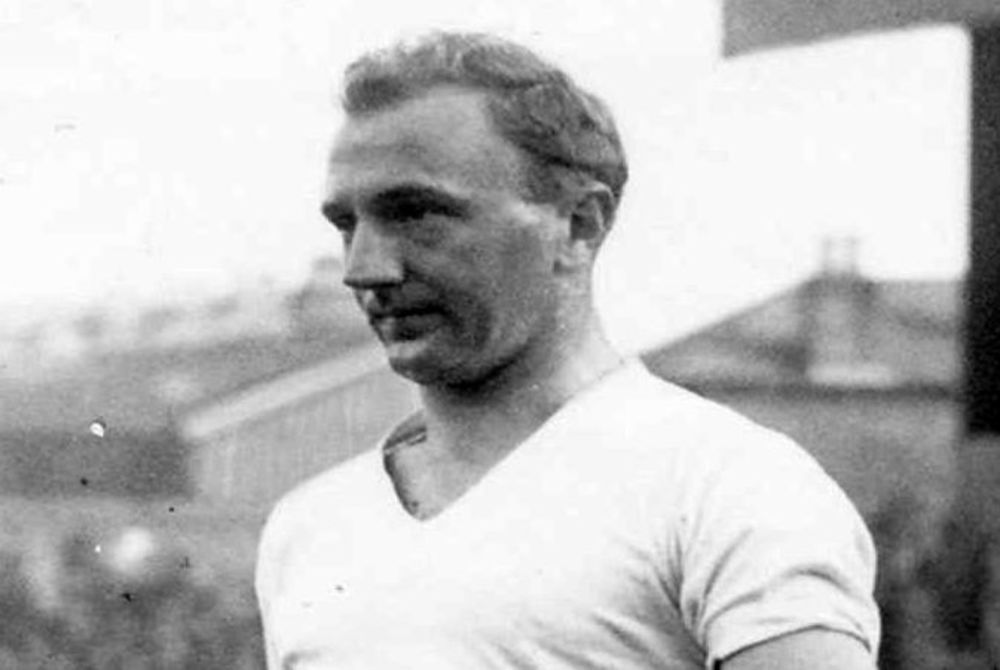
Seamus Dunne
Dunstable Town in its various guises have had some well-known faces managing them, such as Barry Fry and Kerry Dixon. However, one of the longest serving in the Southern League was former Republic of Ireland international defender Seamus Dunne.
Born in Wicklow, Dunne enjoyed a glittering youth career which included skippering his country in the World Youth tournament of 1948 and which led to him being signed by League of Ireland side Shelbourne.
Clubs in England had begun to take notice and Luton Town were the first to try to entice him to Kenilworth Road.
He was not particularly keen to leave a good pensionable job as a Local Government Officer, but he eventually relented and signed for the Hatters in July 1950.
After a season in the reserves, his Football League debut came on Boxing Day 1951, in a 6-1 home win over West Ham United.
Virtually ever-present at Kenilworth Road for the next ten years, Dunne was a mainstay in the side that won promotion to Division One in 1955 and managed to keep the top wingers in the country, including Stanley Matthews, and Tom Finney, quiet as the Hatters cemented their place in the top-flight.
Dunne was injured during Luton’s 6-3 home victory against Arsenal on Boxing Day 1958 and was not fit to return as the Town embarked on the road to Wembley for the FA Cup final of 1959.
Unable to win his place back in the Hatters cup team, they retained the same eleven throughout the cup run and Dunne missed out on their Wembley day.
After Luton were relegated from Division One in 1960 the side began to split up and Dunne played his last game in a 4-1 defeat at Bristol Rovers in February 1961 – his 301st for the club.
He was then signed by former Newcastle United and England legend Jackie Milburn for Southern League Yiewsley, where he spent three years.
In 1964, he took over as player-manager at Dunstable Town while working at Vauxhall Motors in the engineering section.
His first season in charge was in the Metropolitan League, but the club moved into the Southern League along with Barnet, and he signed several seasoned professionals, including former West Ham United, Birmingham City, Kettering Town and England B winger Harry Hooper.
The chance of an assisted move back to Ireland to work at a chemical plant was too good to turn down, despite the wrench of leaving his adopted town, and so in 1970 he returned `home`.
He sadly died in September 2016, aged 86.
Born in Middelburg, South Africa in 1931, Eddie Stuart was a South African Cup winner with Johannesburg Rangers at the age of just 16 before his move to England to join Stan Cullis’ Wolverhampton Wanderers squad in 1951.
In all, he made 322 appearances for Wolves scoring just one goal – ironically on his debut in a home defeat against West Bromwich Albion in April 1951 when he played as a striker.
He played one more game that season but then had to wait almost two years before he got back into the first team when he played the final 12 games of the 1953/4 campaign as Wolves homed in on the championship title for the first time in the club’s history.
Stuart`s cause in establishing himself wasn’t helped by the form of the regular full-backs, Roy Pritchard and Jack Short, and the fact that he picked up a tropical virus in Egypt on a stopover from a break in his native South Africa in the close season of 1952. So serious was his illness, it almost claimed his life.
But after those 12 games he was to make the right-back position his own over the next eight seasons during which he was a Championship winner in both 1958 and 1959. He missed just six games in those two seasons.
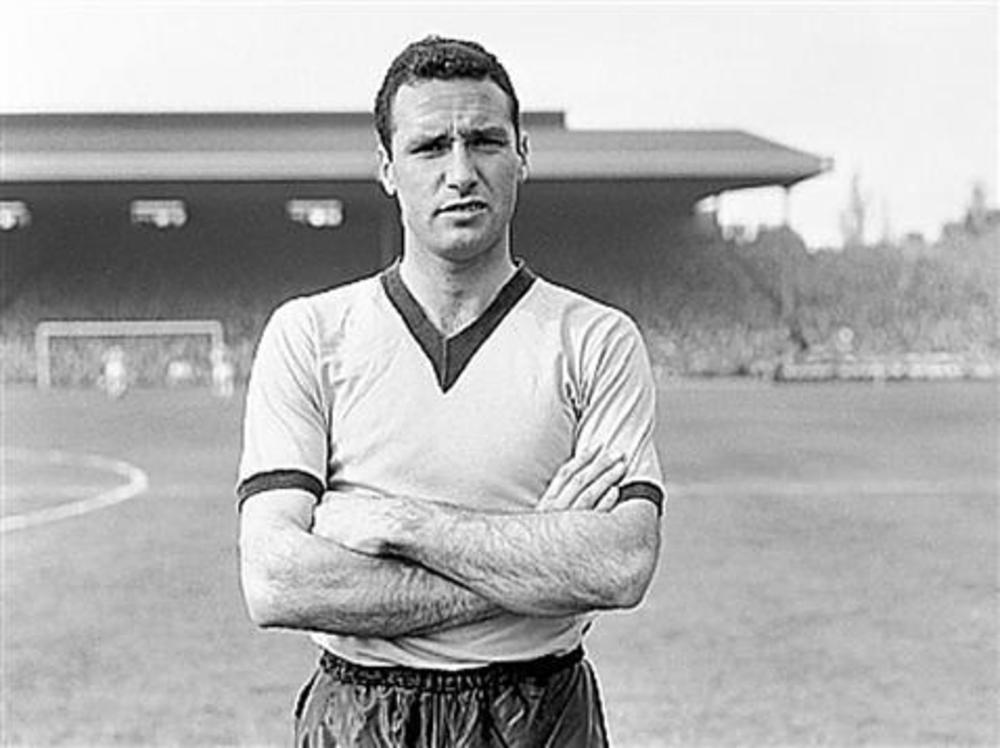
Eddie Stuart
He was immensely proud when he was made captain of the club in 1959, following the retirement of Billy Wright. He had also captained the team in 1953 when Wolves played the South African national side in a friendly to mark the opening of the Molineux floodlights.
He moved to Second Division Stoke City in the summer of 1962, helping them to the title and, for him, it meant a quick return to English football’s top-flight.
He later moved to Tranmere Rovers and then Stockport County before moving into non-League circles with Southern League Worcester City where he became player-manager in 1968.
Stuart led a star-studded City to fifth spot in his first season in charge.
The team was packed with professional experience with the jewel in the crown being summer recruit Ivor Allchurch, an inside forward with 68 caps for Wales and 692 Football League appearances for Swansea Town, Newcastle United and Cardiff City.
Add in midfielder Cliff Huxford, with 322 Football League appearances, and forwards Harry Middleton (223) and Brayley Reynolds (205), along with Stuart`s 500-plus matches at the top level and it`s easy to see why it was a memorable season for City fans.
Stuart spent four years with the club but left St George`s Lane when he retired from playing in December 1971.
After leaving the game, he ran a string of hairdressing salons around the Wolverhampton area and sadly died in November 2014 in Wrexham, aged 83 following a long illness

Most clubs are looking for volunteers. Find out more on the button below:
www.PitchingInVolunteers.co.ukAll the news and results in one place.
REGISTER